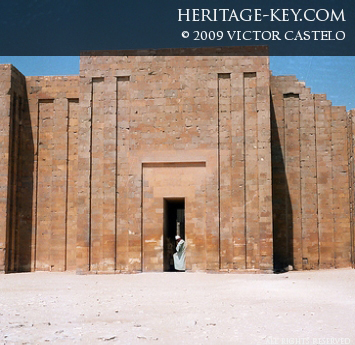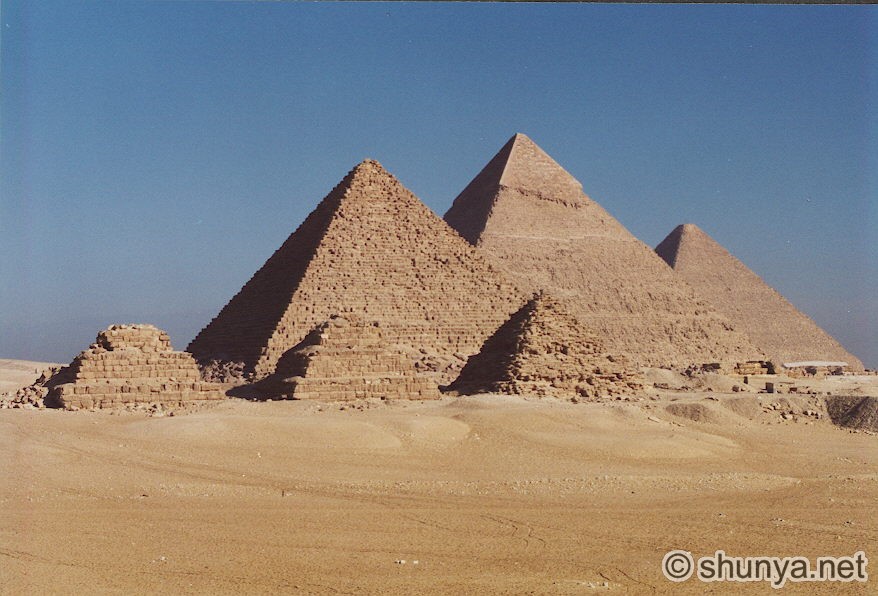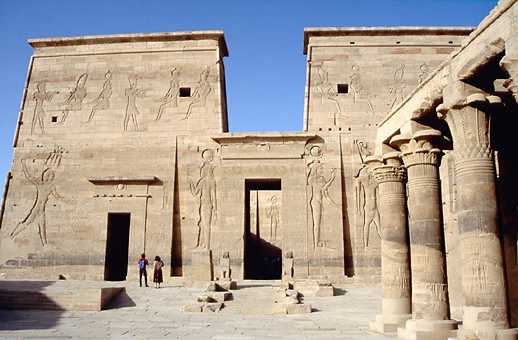
Temple of Saqqara in
Memphis
source: Accessed : 23rd
February 2011

The pyramids of Giza in
Memphis
source: Accessed :
23rd February 2011

Temple of Isis in Memphis
source: Accessed : 23rd
February 2011
|
Memphis, one of the most important ancient Egyptian cities, is the one that has been associated with the renown figure of Pharaoh Ramesses and the monuments which include the pyramids of Giza Saqqara and the Sphinx. Ineb-Hedj (the original Egyptian name for the city which also means 'The White Wall') remained the capital for long time due to its strategic location between the Upper and Lower Egypt and in the apex of the Delta. Due to its location, Memphis could control the trade with the Mediterranean region, as well as withing Egypt.
Manetho1 in his texts mentioned that the city was founded by the pharaoh Menes, the first one to unite the Two Lands. The same story had been reported in Herodotus' 'The Histories', where Herodotus wrote that the city was founded more than 2500 years prior to his visit, namely around 3100 BCE. Menes, according to many scholars could simply be a legend, since it is possible that Egypt was united due to common culture, mutual needs, trading relationships. What, however, seems to be undeniable, is that Memphis was, indeed, the first capital of a united Egypt. Its history started with the establishment of the 1st dynasty during the Old Kingdom, whereas its decline was incited by the arrival of the Romans who favored Alexandria. However, little is known about the city since the 3rd Dynasty, when the complex of Djoser was built in one of the Memphis' Necropoleis, Saqqara.
In Memphis, architecture, as in most of the Egyptian cities, focused mainly on the monumental constructions related to religion and power. The pyramids of Saqqara and Giza are the strong evidence of this mentality. As early as the 6th Dynasty, Memphis was 'the heir to a long artistic and architectural practice, constantly encouraged by the monuments of preceding reigns'.2 All these construction periods included, of course, the designation of small settlements for the craftsmen and labourers, as the ones described in El Lahun and Akhetaten database entries.
Memphis was a megalopolis, 'spread over several kilometres stretching in all directions [..] with temples connected by sacred temenos, and ports connected by roadways and canals. The perimeter of the city thus gradually extended into a vast urban sprawl. Its centre remained around the temple complex of Ptah.'3
Evidence shows that Memphis stood as, probably, the most important political and administrative center of Egypt until the Roman period. Even during late Dynasties, many Pharaohs - like Akhenaten and Thutmosis III (both from 18th Dynasty when Thebes was the capital) - held residences there, but they were also accepted as Kings of Egypt, only when they were crowned at Memphis.
Footnotes:
1. Manetho was a priest that lived during the 30th Dynasty and was commissioned by Ptolemy II to write the Aegyptiaca, three books on the history of Ancient Egypt, as part of an effort to connect Egyptian and Hellenistic cultures. (source : http://www.ancient-egypt.org/index.html )
2. Wikipedia. Vocabulary entry: Memphis, Egypt.
3. Wikipedia. Vocabulary entry: Memphis, Egypt.
source: 1. Wikipedia. Vocabulary entry : Memphis, Egypt
2. Memphis Capital of Ancient Egypt 2009, The Ancient Egypt Site, [online]. Accessed : 23rd February 2011.
3. Memphis a Special Edition, Tour Egypt, [online]. Accessed : 23rd February 2011.
4. The Saqqara Necropolis in Egypt, Tour Egypt, [online]. Accessed : 23rd February 2011.
5. Archaeology Memphis, Centre for Egyptological Studies of the RAS, [online]. Accessed : 23rd February 2011.
6. Pictures Photos of Memphis Egypt, Shunya, [online]. Accessed : 23rd February 2011. |

